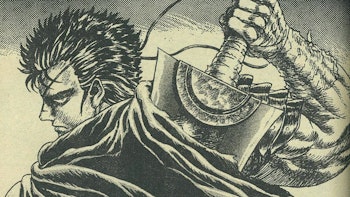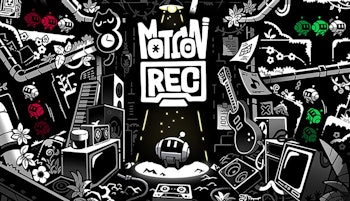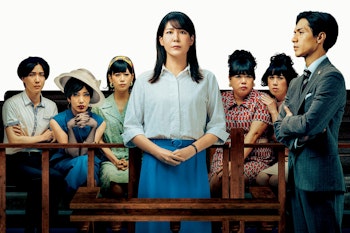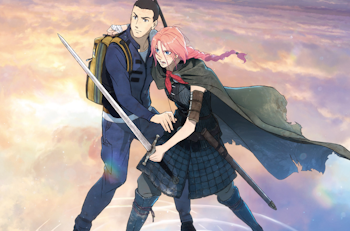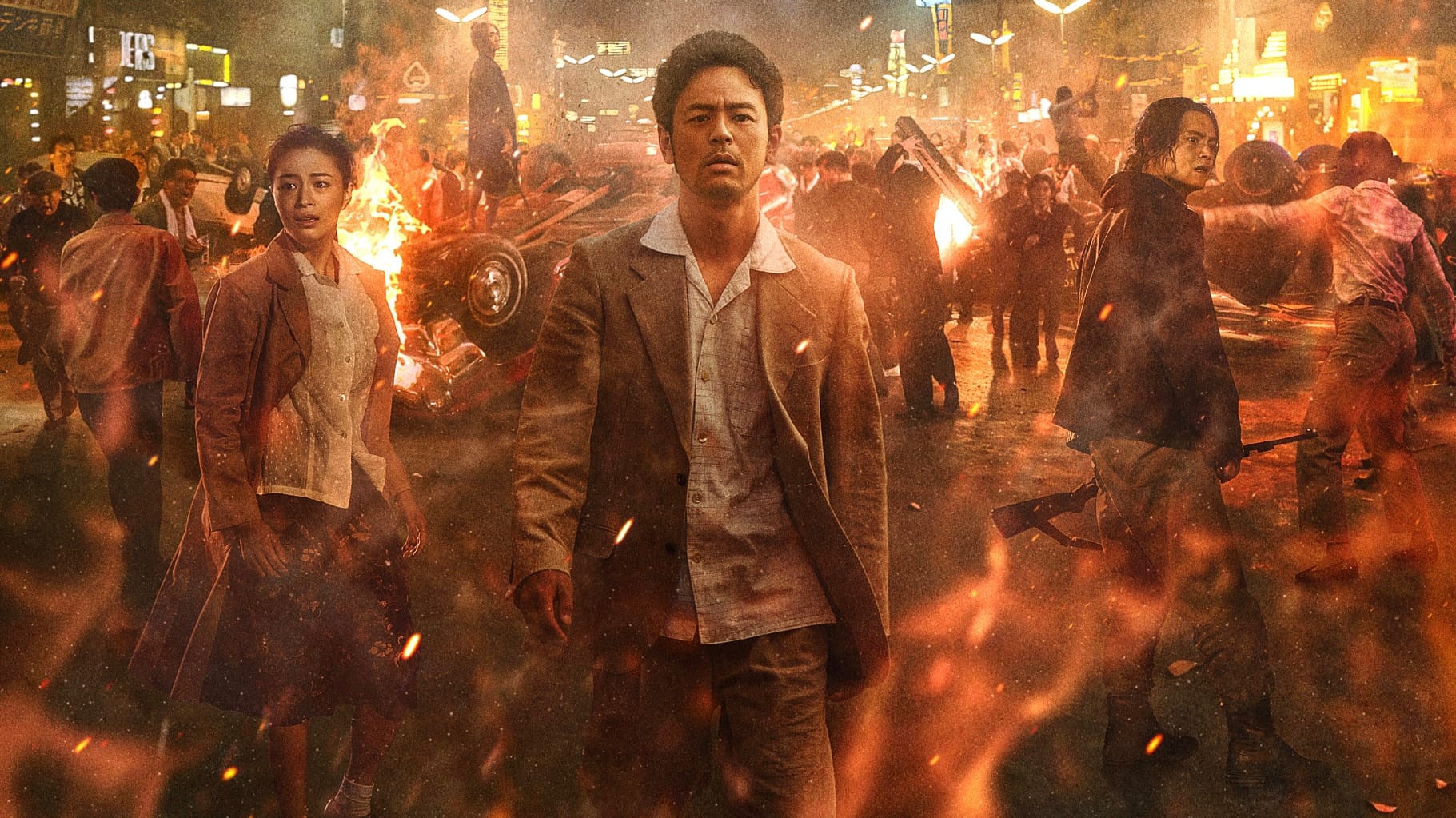
In the latter stages of World War II in April 1945, the United States with help from the UK initiated their only ground offensive on Japanese soil. Operation Iceburg was both a first strike to bring total defeat against the Axis power and a chance for the country to gain a crucial air base they could use for a planned assault on the mainland. In the end this assault never happened, with the United States instead inflicting the first and only wartime use of nuclear weapons against the cities of Hiroshima and Nagasaki that August.
Following the Japanese surrender, Okinawa became a temporary base for the American occupation. Eighty years later, to much chagrin and tension within the local community, they’re still there. Centered on the first thirty years of this occupation, Keishi Otomo’s highly ambitious and hefty 191-minute epic, Hero’s Island, grounds itself in this simmering anger and resentment.
In the early moments of the film taking place shortly after the end of the war, Gusuku (Satoshi Tsumabuki) participates in a group of senka agiya in regular raids of the nearby American military base to procure supplies for their small town. The leader, On (Eita Nagayama), is a close friend of Gusuku, as is his younger brother Rei (Masataka Kubota), each also participating in these assaults vital for helping the struggling community survive the harsh early postwar years. One night, they go for another raid of Kadena Air Base, On’s partner Yamako (Suzu Hirose) remaining on the outskirts. Their luck runs out.
Caught by the American military they attempt to flee, but not without losing sight of their close friend On in the chaos. The loss impacts them all greatly, with the group inactive ever since as they seek answers, or at least closure, on what happened to their friend following that fateful night. Rei joins the criminal underworld in search of answers, Yamako becomes a teacher, and Gusuku joins the police, placing him into an uneasy co-operation with the occupation forces he can’t necessarily see eye to eye with. Perhaps, through it all, answers will come.
Whereas the American occupation of Japan ended officially in 1952, with the Cold War inciting a tense new order around the globe and Okinawa being seen as a perfect vantage point by the country for efforts in Asia, their control over the country’s southern islands would continue. The film covers the near-30-year initial stretch of American occupation in the region culminating in the 1970 Koza riot, one of numerous real-world events intertwined with this story of grief, anger, resentment, and a search for answers amidst the injustice of American actions in the country.
It’s hard not to compare Hero’s Island to another decades-spanning odyssey charting a changing Japanese culture after World War II. Kokuho continues to find unprecedented success at the box office, transforming an initial success to a word-of-mouth record-breaking hit that now stands as the second-highest grossing domestic live-action film of all time with no signs of slowing down. Its use of kabuki as a vector for exploring the cultural globalization and Westernization of the country in response to an opening up to international ideas through occupation and economic expansionism, questioning how modern ideas encroach on tradition, communities and dynamics, bears striking resemblance beyond these stories both being decades-long 3-hour human dramas on such a grand scale.
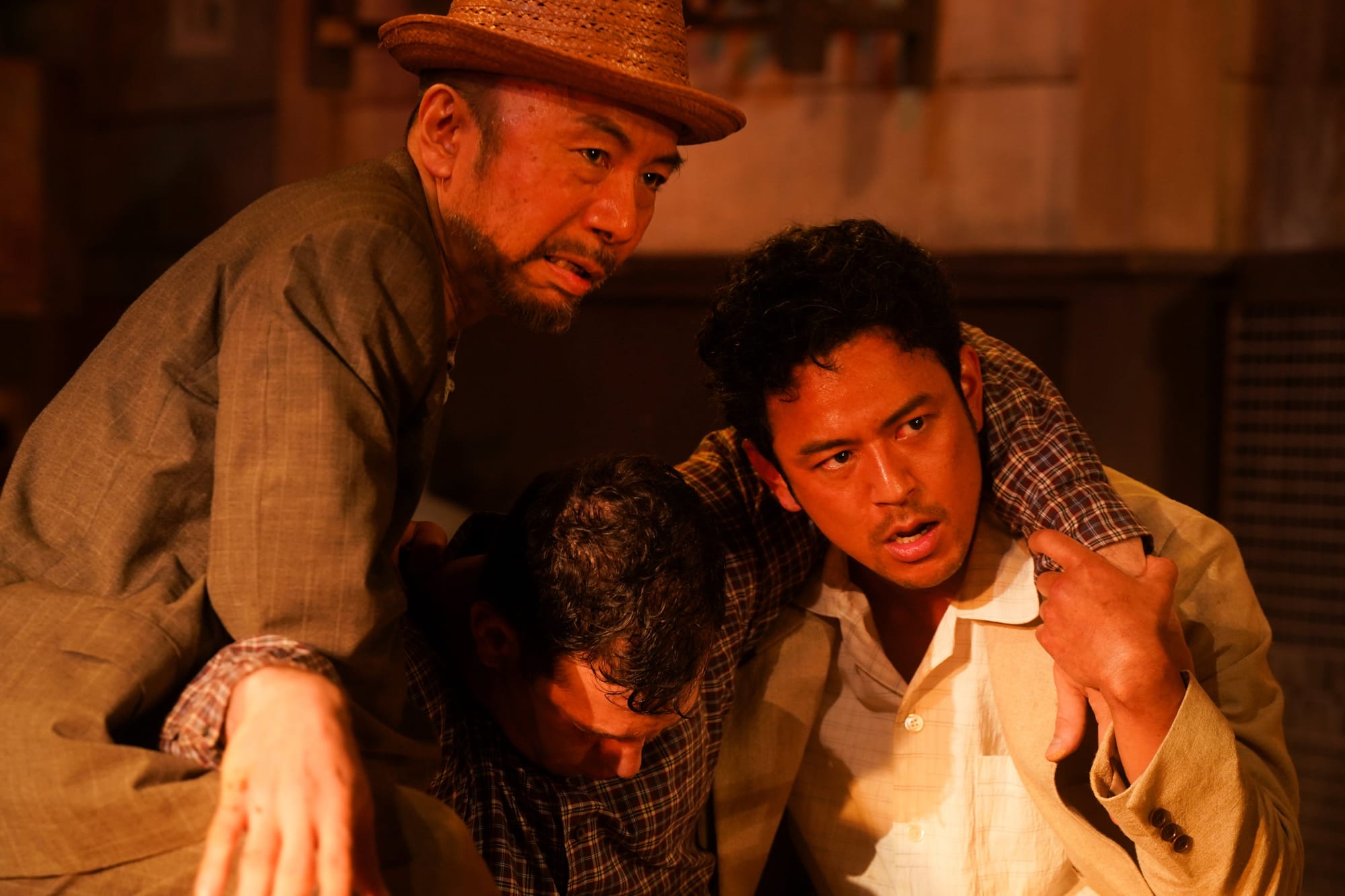
Whereas Kokuho tracks the real-world decline of kabuki through fictional performers, Hero’s Island uses real-world flashpoints of tension as a way to ground its fictional search for Gusuku’s friend from that fateful raid and elevate this search as emblematic of the injustices of American occupation. Gusuku plays his role as detective with a sense of unwavering justice, his search for criminals in the Okinawan town next to Kadena Air Base often placing him in direct conflict with the military base he lost his friend too years prior even as he partners with a more-sympathetic officer trading information on both sides, played by an international actor based in Japan, Derrick Dover.
On’s disappearance and the search for answers drive every character’s actions throughout the film, played against a realistic set that recreates post-war Okinawa using physical sets and lavish CGI to stunning effect, all against the backdrop of real-world flashpoints defining these first decades of American occupation. The production design of the film is a character in and of itself grounded the poverty, disparity and uncomfortable tension between US money and disrespect into the dirt roads and delapidated streets of Koza where the film is set, saturating it in a claustrophic high-contrast visual that prevents these large locations feeling too grand for the intimacy of the human drama at its core.
While it becomes clear early on that each of our surviving castmembers no longer hope to see On alive, their lives are undeniably shaped by his loss and the blame the US have in that. It does, however, place the search for answers to On’s disappearance in a weird space within the film’s grander commentary on the lingering American presence in the region, which is where the film is at its strongest. Ultimately On’s loss is tragic but feels more of a symptom to the grander tragedies even our characters spend more time caring for after the initial opening 30 minutes. Tension in Gusuku’s uneasy alliance with the US military come from their unwillingness to hand over lists of troublemakers on base that could help track down perpetrators for unsolved crimes, while Rei gtets further intwined in the yakuza through his assaults against US officers.
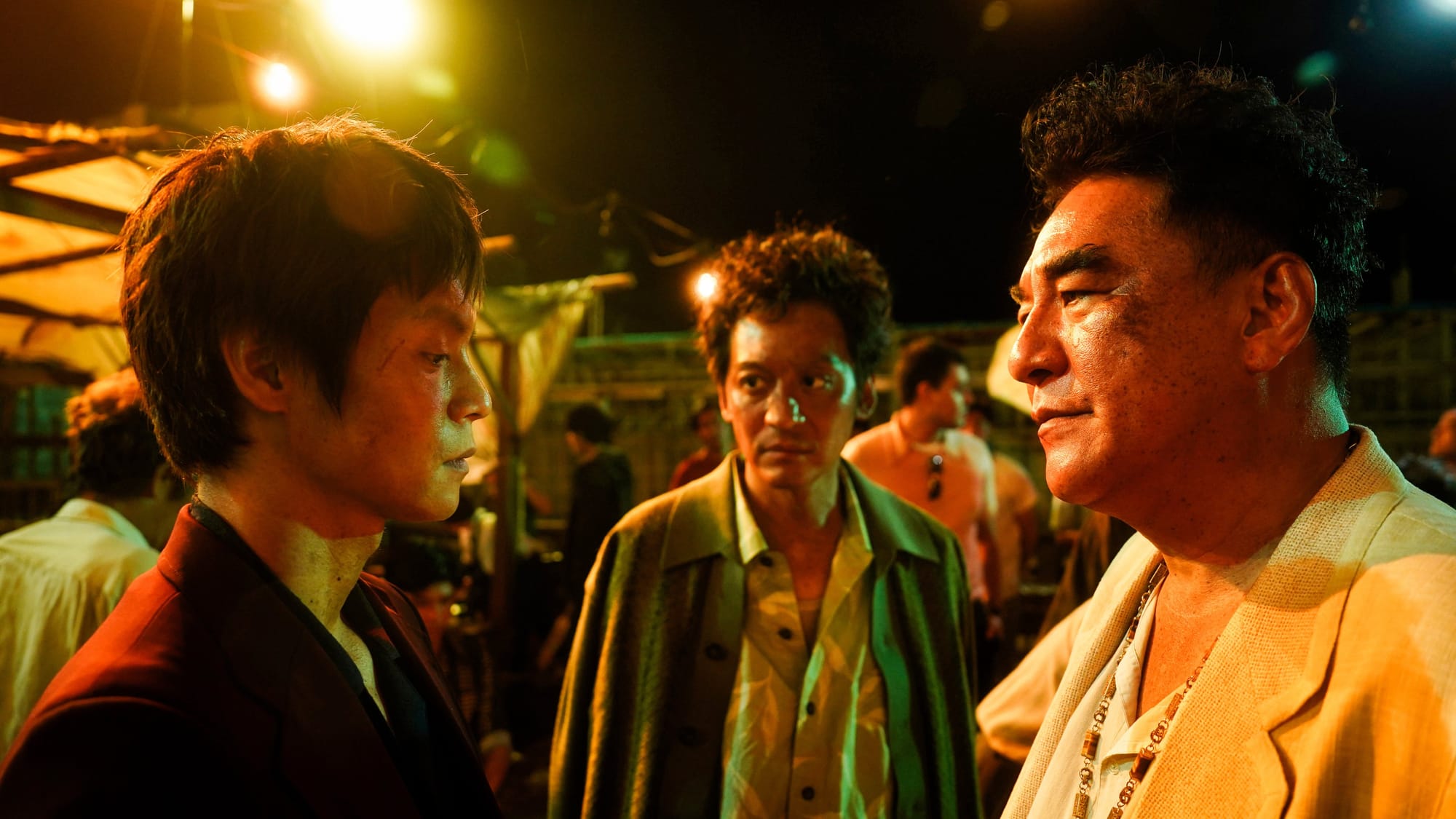
Mostly, however, two real-world events depicted by the film have a far greater impact on shaping these characters than even On’s loss. In 1959, an F-100D military plane crashed into an elementary school in Ishikawa after a mechanical failure during the flight, injuring hundreds and killing 18 people. For this dramatization, Yamako is a teacher at the school and witnesses the tragedy first hand including the death of some of her students, transforming her into a feirce anti-American protester. Having attempted to move on alone following the events of the film’s opening, her involvement brings her back into this circle.
This all comes to a head in 1970 when another US military crime going unpunished and leads to simmering anger coming to the boil. The Koza riot was a massive island-wide spontaneous protest where angry locals burned cars and attacked the base in response to their disregard for the people, lack of accountability and continued presence after 25 years, long after many viewed their presence necessary. This set-piece is brought to life in the film with stunning clarity, acting as the climax that brings everyone together, returns us to the base, and brings answers to what happened to On during those crucial moments.
In attempting to balance a sweeping anti-American commentary into this human drama, the film never feels focused enough on either tale to make their conclusion fully satisfying. The eventual answers to On’s disappearance are somewhat nonsensical and far-fetched, and the lack of attention of this make it difficult to care when the film screeches to a hault for an extended flashback tying every event of the years to follow with his legacy. The sense of mythos to this fateful attack as a core element shaping the events of the entirety of Okinawa diminish the characters and neuter the palpable anger the director and its characters clearly have against the US occupation.
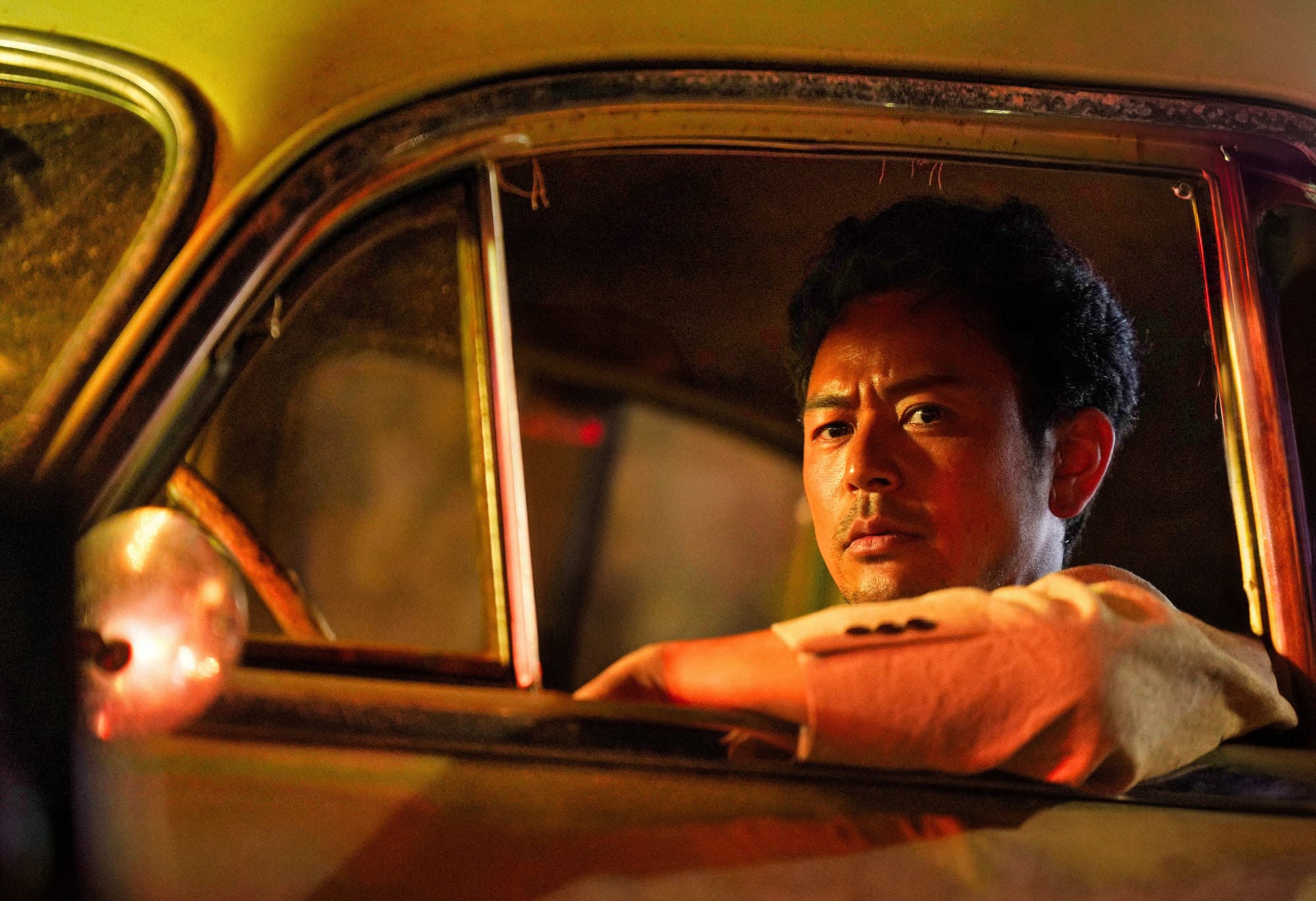
It’s difficult not to feel the destination of Hero’s Island doesn’t quite live up to the journey through post-war anger and a changing Okinawan society that we have been treated to. Perhaps that’s ok, however. The film is far from dull, with stunning performances from everyone involved, even minor actors, elevating the story far beyond this disappointing climax. While I can’t say On’s tragic tale stuck with me for very long after I left the cinema, the superb set and production design is the true star and worth the price of admission, placing the audience into post-war Okinawa and emphasizing the injustice of American occupation and a search for justice that’s yet to be realized.



